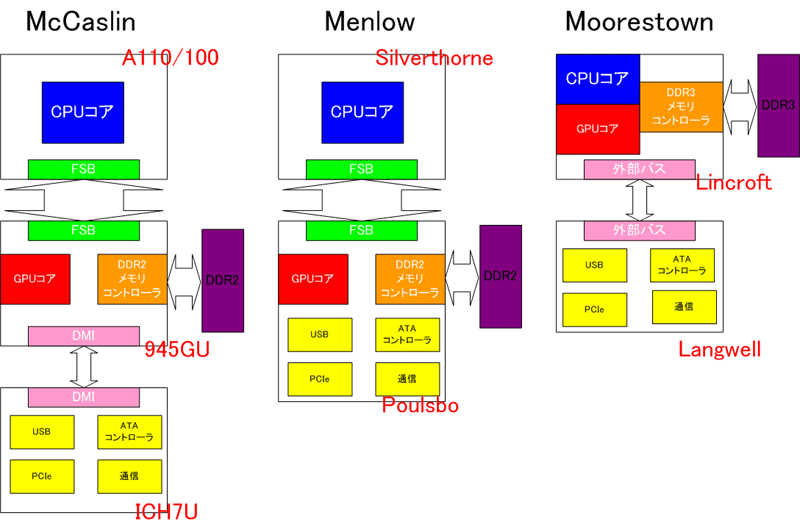Quick recap for thoses who don't know about this new Intel initiative:
Diagram from PC-Watch (JP):

So, with the basic info I gathered on this platform sumed-up. The question is... what should we expect from the graphics cores of these platforms?
What 3D capabilities should we be looking for here, OGL ES 1.1, 2.0, OVG 1.0?Should we expect an Intel design or would PVR's SGX be a good bet?
- Intel plans on releasing a new "ultra mobile" X86 platform. (Think internet tablets, PocketPC and eventually cellphones with Moorestown.)
- The first generation (2008), Menlow, will feature a small in-order CPU, Silverthorne, and will have a chipset, Poulsbo, featuring the memory controller and, the relevant part for this forum, a GPU.
- The next-gen (2009), Moorestown (video and marketing blab), will have the CPU, GPU and the memory controller on the same die, Lincroft, and its chipset, Langwell, will only handle I/O.
- Menlow and Moorestown should both be 45nm product.
Diagram from PC-Watch (JP):

So, with the basic info I gathered on this platform sumed-up. The question is... what should we expect from the graphics cores of these platforms?
What 3D capabilities should we be looking for here, OGL ES 1.1, 2.0, OVG 1.0?Should we expect an Intel design or would PVR's SGX be a good bet?
